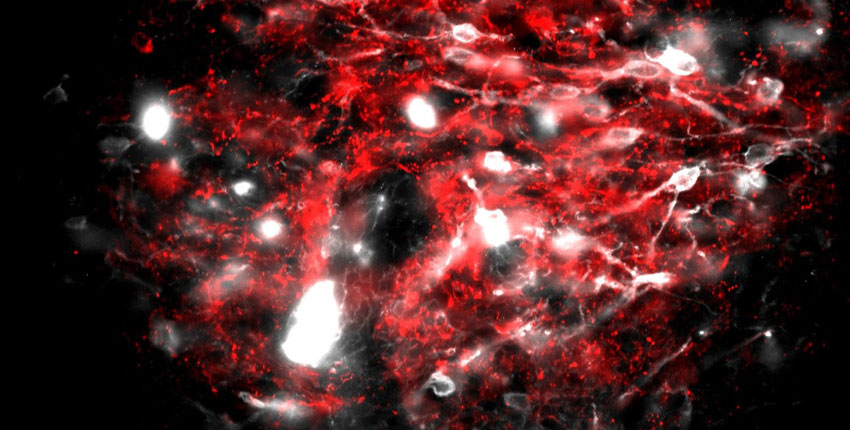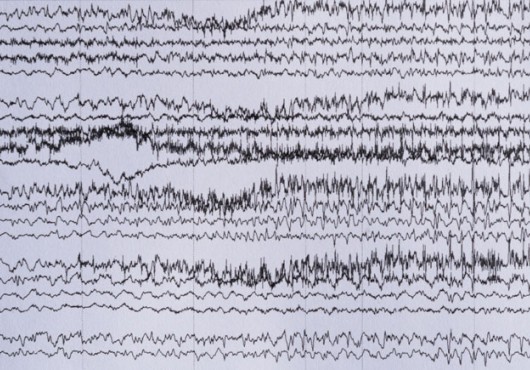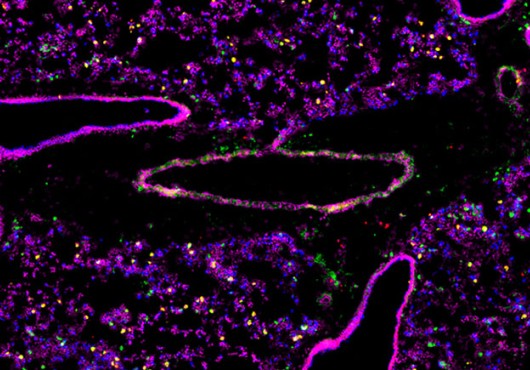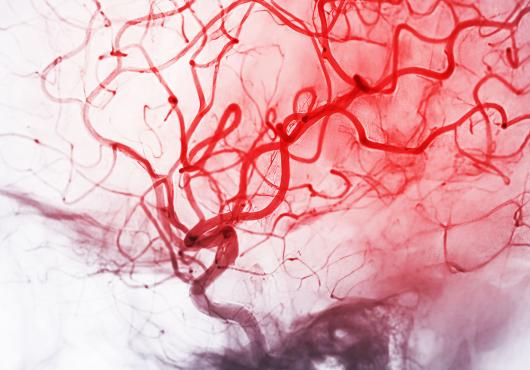
Nausea is a bit of a catchall sensation for the human body: the unpleasant sick feeling can hit us as a result of everything from pregnancy or a migraine to eating spoiled food or undergoing chemotherapy.
Yet despite its ubiquity, scientists still don’t understand precisely how nausea works on a mechanistic level.
Now, a team of researchers led by cell biologists at Harvard Medical School is making strides in deepening our understanding of the brain pathways that control nausea.
In a study conducted in mice and published June 14 in Cell Reports, the scientists described a mechanism by which inhibitory neurons in a specific brain region suppress the activity of nausea-causing excitatory neurons to tamp down nausea.
The work illuminates the basic biology of nausea. If affirmed in further studies in animals and humans, it could inform the development of better anti-nausea medications.
Mediating malaise
Nausea evolved to help us survive by prompting vomiting when we ingest toxins or contract an infection. However, nausea can become a major problem when it occurs in other contexts—for example, during pregnancy or as a side effect of treatments for cancer or diabetes. If untreated, uncontrolled vomiting can lead to electrolyte imbalances and, in rare cases, life-threatening dehydration. Current medications for nausea associated with these conditions aren’t all that effective, in large part because scientists don’t have a detailed understanding of how the brain produces the sensation.
“We cannot really develop better treatment strategies until we know the mechanism of nausea,” said lead author Chuchu Zhang, a research fellow in cell biology at HMS.
Zhang and senior author Stephen Liberles, professor of cell biology in the Blavatnik Institute at HMS, are studying a region of the brain stem called the area postrema that appears to be involved in nausea.
Earlier research found that stimulating this brain region induces vomiting, while disabling it reduces nausea, “but how it plays a role in nausea was not known, so we thought this would be a good place to start,” Zhang said.
In a 2020 study in Neuron, Zhang and Liberles identified excitatory neurons in the area postrema that cause nausea, along with their associated receptors. Specifically, they characterized neurons that express the receptor for GLP1, a protein linked to blood sugar and appetite control. This receptor, they noted, is a common target for diabetes drugs, for which nausea is a major side effect.
When neurons with GLP1 receptors were turned on, mice showed signs of nausea, and when the neurons were turned off, the nausea behaviors stopped. The team also mapped these nausea-inducing neurons, located outside the blood-brain barrier, which allows them to easily detect toxins in the blood.
“Understanding what receptors are expressed in the area postrema tells us what kinds of pathways may be involved in nausea signaling,” Zhang said.
“One traditional approach to intervene in nausea is to block those signaling pathways using pharmacological inhibitors,” Liberles added.
However, the researchers wondered if there could be another way to reduce nausea—one that focuses instead on inhibitory neurons that suppress excitatory neurons in the area postrema.
An alternative path
In the new study, the researchers explored the structure and function of inhibitory neurons in the area postrema. Mapping these neurons revealed that they form a dense network that connects with nearby excitatory neurons. When the researchers activated these inhibitory neurons, the mice stopped nausea behaviors that are typically caused by excitatory neurons.
Delving deeper, the team identified three types of inhibitory neurons in the area postrema. One of these types expresses a receptor for GIP, a small protein released by the digestive system after eating, stimulating the release of insulin to control blood sugar.
“We were curious whether this population of inhibitory neurons marked by the receptor for GIP could be manipulated to suppress nausea behavior, and how that mechanism works,” Zhang said.
When the researchers used GIP to activate these inhibitory neurons, inhibitory currents prompted by the chemical messenger GABA flowed to nearby excitatory neurons, reducing their activity. On a behavioral level, giving mice GIP to activate these inhibitory neurons eliminated nausea behaviors. On the flip side, when the inhibitory neurons were destroyed, mice continued to show signs of nausea, even after receiving GIP.
Because mice don’t vomit, Zhang noted, the study relied on observing the presence of behaviors suggestive of nausea, such as avoiding toxic substances. Given that the same brain pathways exist in humans, the researchers say the mechanism is likely conserved.
“By identifying inhibitory neurons that suppress nausea in a pharmacologically accessible brain region, we can simply engage these neurons to counteract nausea responses,” Liberles explained.
“The brain stem inhibitory neurons in the area postrema are potentially a great clinical target for anti-nausea drug development,” Zhang added. “It’s definitely a new strategy for developing anti-nausea treatments.”
GIP is already being studied as a potential treatment for nausea, Zhang said. In fact, preliminary research has shown that giving GIP or activating GIP receptors can reduce nausea in animals that do vomit, including ferrets, dogs, and shrews. Scientists are currently working on incorporating GIP into diabetes treatments that target GLP1 receptors, with the goal of decreasing nausea as a side effect.
Zhang and Liberles plan to continue exploring the basic biology of nausea, including how these inhibitory neurons in the brain are naturally activated, and what other brain regions are involved in controlling their activity. The team also wants to investigate additional receptors expressed by inhibitory neurons, and the various signaling factors that engage them.
“Because there are different ways to trigger nausea, there are probably different receptors and signaling factors involved that could be used as drug targets to suppress nausea.” Zhang said. “We want to know more about the various nausea mechanisms so that we can develop even better treatment strategies that are tailored to specific conditions.”
The research was supported by the NIH (R01 NS122767; DP1 AT009497; R01 DK103703, the Medical Research Council-UK (MRC_MC_UU_12012/3) and the Wellcome Trust (106263/Z/14/Z).
Additional authors include Lindsay Vincelette of HMS and Howard Hughes Medical Institute and Frank Reimann of Wellcome Trust.





